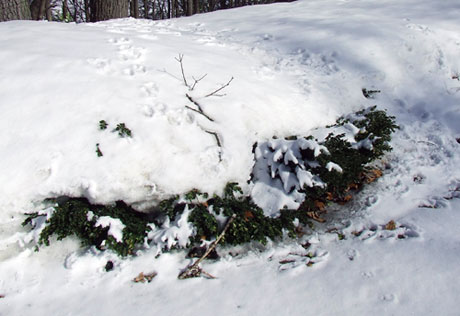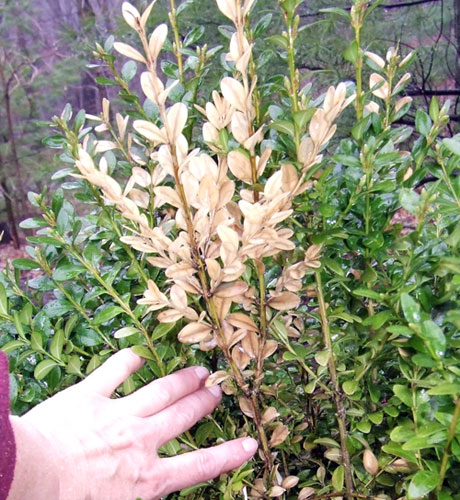Shrubs breaking down? Recovering the landscape from Old Man Winter
The crushing weight of snow and ice on landscape trees and shrubs leaves lasting damage.

As snow piles recede, they reveal the impacts the harsh winter has had on home landscapes. Extreme cold coupled with dry, sunny conditions can leave buds and leaves desiccated and brown, but what about plants that are now bowing over, stems sometimes split and broken? Will they recover? (For more signs of winter injury, see “Winter tree and shrub injury: What are the signs?”)
According to Michigan State University Extension horticulture educator Bob Bricault, a winter-like 2014 often has lasting effects on landscape plants. Foundation plants such as yew and juniper not only had deep snow packed around them, but as homeowners shoveled roofs to reduce weight, each heavy toss reduced plants beneath to rubble. Species known to have brittle wood were especially hard hit, says Bricault. Shrub lilacs, rhododendron and others may have suffered enough breakage that they will need renewal pruning or complete rejuvenation. Pruning can be done from the time the snow recedes until late spring.
In some cases, unbroken branches that are simply pinned down by ice and snow may bounce back over the course of the growing season. However, long established plants with broken branches may have to be heavily pruned, leaving behind a lopsided or disfigured plant. Bricault says that this is the year you may want to completely replace plants or be patient and wait for them to re-grow.

Boxwood peeking out from a lasting snow drift may bounce back in the spring. Check the stems below for breakage and rodent damage. Photo credit: Rebecca Finneran, MSU Extension
Don’t remove snow now
If the plants are still covered with piles of snow, should we “help them out” by doing some digging and shaking? Bricault says no – in fact, we may do more damage than good in our exuberance to correct the situation. He encourages people to be patient and allow the snow and ice to melt away over time then access the damage before making any decisions.
Unfortunately, dead stems may show up late in the game on plants such as boxwood. Having relatively thrifty evergreen leaves, this plant may look alive this spring when its stems are actually broken. Throughout the spring and summer, whole branches may brown out and die as a result of a break that was not very obvious.
Rodent damage hiding underneath
There is also a good possibility that when investigating your favorite shrub you may discover rodent damage lurking beneath. The year 2014 is proving to be a record year for rodent damage to shrubs, even their least preferred plants such as boxwood, spruce and juniper. Stems of shrubs that have been completely girdled by rodents will die eventually, so spring is a good time to prune the stems back to green tissue. Do thorough checks before you make your pruning decisions.

Rodents such as rabbits fed heavily this year, even on shrubs that are their least favorite. These girdled stems will need to be removed in the spring. Photo credit: Rebecca Finneran, MSU Extension
For more information on a wide variety of Smart Gardening articles, or to find out about Smart Gardening classes and events, visit www.migarden.msu.edu.



 Print
Print Email
Email


